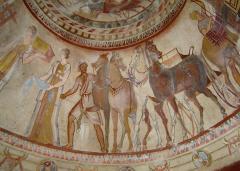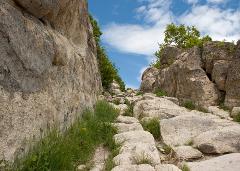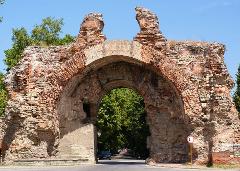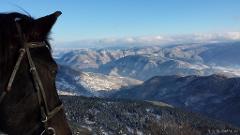The Hidden Gems of Bulgaria's Thracian and Roman Heritage
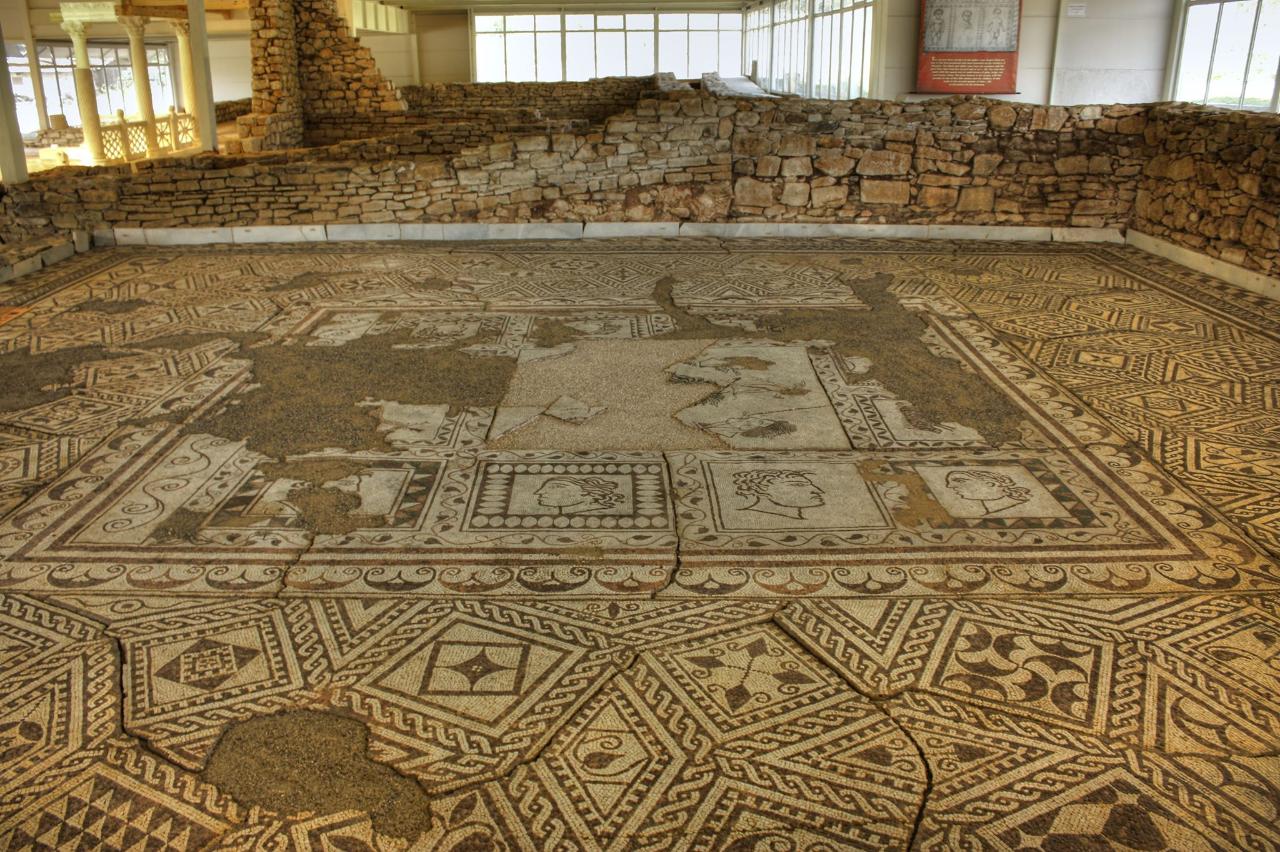
- Duration: 5 Hours (approx.)
- Location: Ivailovgrad
- Product code: HIDGEMHER
About
This weekend tour takes us to the ancient city of Perperikon – one of the most impressive archeological complexes in Bulgaria, sometimes referred to as the Bulgarian Machu Picchu. We’ll continue our journey back in time in the nearby Tatul sanctuary – a truly unique Thracian megalithic complex carved into the rocks of the Rhodope mountains. From there, we’ll head down to Ivaylovgrad, home to an impressively preserved Roman discovery where we will see the beautiful mosaics and statues used to decorate the homes of the most important members of ancient Roman society. Our final stop is the village of Mezek, where ancient tombs and Medieval fortresses coexist. This village also gives us the chance to try the delicious wine produced in its very own Mezek winery.
Highlights
• Explore the ancient city of Perperikon – 8000 years old
• Visit the ancient sanctuary of Tatul – unique among Thracian megalithic complexes in Bulgaria
• See Villa Armira – one of the most interesting Roman heritage sites in Bulgaria
• Get a close look at the Medieval fortress of Mezek
• Enjoy the fine wine at the Mezek Wine Cellar
Description
Day 1
This excursion first takes us to the ancient Thracian city of Perperikon – the largest megalith ensemble on the Balkan peninsula and known worldwide as the Bulgarian Machu Picchu.
Located atop a tall hill in the Eastern Rhodope mountains and carved into its rocky cliffs, Perperikon is built in a place that was believed to be sacred. Archeological findings show that it was inhabited as early as the 6th millennium BC, during the Neolithic era, and it was likely used as a sanctum. Some historians believe that Perperikon is the location of the ancient Temple of Dionysius that is mentioned in numerous ancient Greek texts. After a long and turbulent history in the hands of the Thracians, then Byzantines, then Bulgarians, it was finally razed to the ground by the invading Ottoman Turks in the mid-14th century.
While advanced metalworkers, the Thracians were not typically city-builders, preferring to live in villages instead, which makes the size and structure of Perperikon all the more impressive. Today you can see what is left of the numerous buildings, streets, a water supply system, structures that were used for ritualistic purposes, such as a roofless oval hall that was used for divination, an altar, tubs used for winemaking, and the tombs of the rulers that were buried in the city during its golden days. Among the later structures are a nave basilica built after the Byzantines converted the Thracian tribe that inhabited the city at the time to Christianity, and a medieval fortress.
You will be able to experience Perperikon up close and personal as you walk through these streets that have seen thousands of years go by.
Our next stop is the Thracian sanctuary of Tatul. It is considered one of the most fascinating and puzzling megalithic complexes in Bulgaria. The sanctuary itself is hand-carved into a rock massif, and the part of it that acts as a tomb is in the shape of a flat-topped pyramid – the only one of its kind in the country. The many objects found in the sanctuary date across several different time periods – from the Copper Age to Medieval times, meaning it was likely continuously used over a period of 5000 years. Our last stop for the day is Ivaylovgrad. Overnight at the Luxor Hotel.
Day 2
First thing in the morning after breakfast, we will visit Ivaylovgrad’s most popular historical landmark – Villa Armira.
This ancient Roman vacation estate was likely built sometime in the 1st century AD and inhabited all the way until the mid-4th century AD. It is the most richly ornamented Roman private home discovered on the territory of Bulgaria. The house itself (which can rightfully be considered a castle) had its own bathhouse, a two-storey main building with a reception hall, bedrooms, and utilitarian rooms all built around a large basin – the centerpiece of the estate. The entire complex is beautifully decorated with statues and floor mosaics depicting mythological creatures, spiritual symbols, and former inhabitants of the estate. Villa Armira is a fascinating archeological discovery and one of Bulgaria’s most significant Roman heritage sites.
We’ll take a detour to a truly unique church that was built in only 7 days. Building a new church while Bulgaria was under Ottoman rule was legally challenging, so the people of Dolno Lukovo Village had to build it in secret. The crafty villagers told the authorities that they were building a barn, but every night they worked together to build their church out of flat river rocks. Only once they had raised a roof over the structure was it safe, because demolishing a roofed building in those days was illegal. The church has no windows and no bell tower, and it is dug into the ground, as were all Bulgarian churches during the days under Ottoman yoke. Light can only enter through a hole in the roof and one near the altar, as well as the entrance. One of the most important features of the church are its wall frescoes.
From there we’ll be setting off for the village of Mezek near Svilengrad. We’ll be passing through the Old Bridge – an architectural landmark built in 1529 by an Ottoman vizier.
We can stop for lunch at the Bridge Restaurant, and if we’re in the mood for dessert – the Parapina dessert house. Mezek is a historical and cultural center and a prolific wine-production area. We’ll be visiting its top attractions, with plenty of free time to try the local cuisine and wine.
Our first stop in the village is the Fortress of Mezek – a Medieval Byzantine stronghold built in the 11th century to be used as a border defense fort. Today it is the best-preserved fortress in Southern Bulgaria. The meadows around it are a popular picnic area.
Next we’ll be visiting the Mezek Tomb. With a corridor over 20 meters in length, it is the longest Thracian tomb in Bulgaria and one of the most interesting tombs built in the Mycenaean style. It is perfectly preserved in its original form, buried under an impressive 15-meter mound of earth. The burial chamber is round, in the shape of a bee hive, and in it was discovered an impressive number of artifacts made out of gold, bronze, iron, glass and ceramics, among which were jewelry and armour pieces. It is thought that the tomb was used as a heroon – a shrine dedicated to a hero. An interesting detail is that it was reused several times, meaning it was likely a family tomb. Evidence of 6 burials have been discovered in total inside the tomb.
After our sightseeing tour, we’ll head towards Mezek Winery to try its exquisite red and white wines. The degustation includes a short rundown of the history of the area and its chief attractions.
Overnight in Mezek.
Day 3
Departure and transfer to Sofia Airport.


